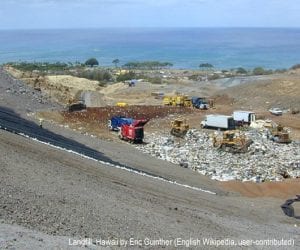The Baltimore waterfront is a beacon for tourism, as well as an entry point to the watersheds of the Chesapeake Bay. But in the future, it may be best known for the way that community leaders acted in order to save it from contaminated water, sewage odor, and (literally) tons of trash. It will likely be a model for other cities that need to save their waterfronts. About four years ago the Waterfront Partnership, an advocacy organization in Baltimore, decided to take a multidisciplinary approach to cleaning up the harbor by 2020, part of which focused on the trash. But how do you remove trash from the Baltimore Harbor, a large, moving body of water. While gathering input from community members and similar organizations all of whom held a stake in the harbor’s well-being, an idea came forward to utilize a machine that has serviced the waterways of Baltimore for hundreds of years: a water wheel.
Old Idea, New Results
Teaming up with Clearwater Mills, LLC, an innovative sustainable technologies company, a design was developed to have a water wheel collect debris before it would even enter the harbor. Set at the bottom of Jones Falls, where it can be powered by natural flow of the river current, the water wheel powered trash inceptor – popularly known as Mr. Trash Wheel – has the ability to remove upwards of 50,000 pounds of garbage every day!
Trash and debris are funneled to the water wheel, up a conveyor belt, and then stored in removable dumpster bin that is easily replaced once full. See it in action! For additional power, solar panels were installed along the wheel’s canopy producing an ultra-efficient solution that is eco-friendly. Each piece of the machine was purposefully included. Even the overall aesthetics of the water wheel were discussed in depth so as to not take away from the visitor experience at the harbor. A positive result of these decisions has been the water wheel becoming an attraction itself.
A Sustainable Solution
Since the Inceptor’s installation in May 2014 it has already rid the harbor of 2,362 tons of trash! But developers and advocates alike hope Mr. Trash Wheel will eventually be taken out of commission because removing the trash is not the long term goal of the project, eliminating the trash is. But, in the meantime this new addition to Baltimore Harbor has served both as a practical solution for addressing the trash problem while also educating visitors to the needs and demands of creating a clean water source.
Creating buy-in for sustainability projects is often quite difficult. There are many stakeholders involved in almost every decision, and the design of the Water Wheel was carefully constructed to appeal to all. Using community support and action for its implementation, the Water Wheel Powered Trash Inceptor is sure to be a sustainable solution for Baltimore Harbor until its services are no longer needed.



